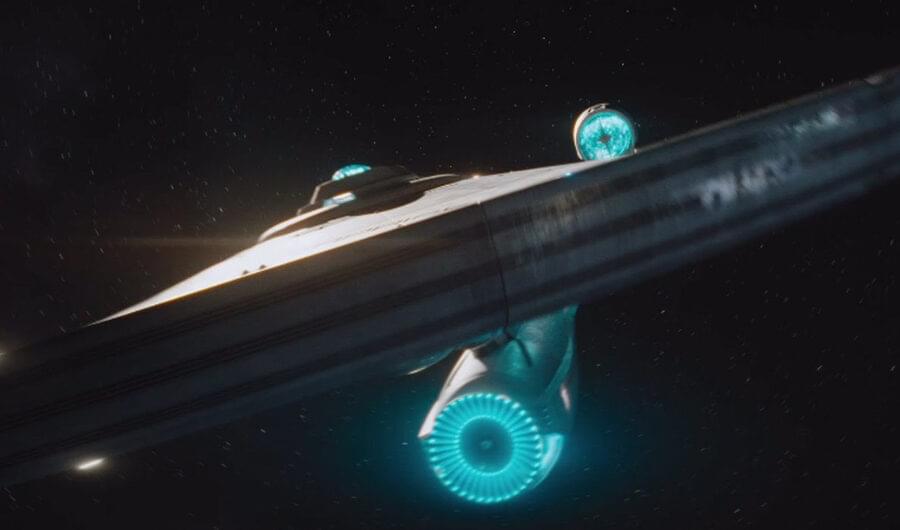
There will never be another good “Star Trek” movie
Saturday, July 30, 2016
Four-minute read
The sequence showing the Enterprise being destroyed in Star Trek Beyond is a technical marvel.
The techniques that created the vast swarm of ships that suddenly attack, overwhelm and pulverize the iconic vessel is light years beyond the original series. It’s far beyond the model work used to destroy the Enterprise in Star Trek III.
But when the Enterprise goes down in a heroic sacrifice in ST:III, it feels tragic, a lost friend. “My god, Bones, what have I done?” Kirk intones as the crew watches horrified as the ship burns up in the atmosphere.
Star Trek Beyond isn’t invested in its destruction sequence as anything more than making sure it looks as cool as possible. Considering this is the third Enterprise to bite the dust in a movie, it’s not even a surprise plot development any more. 1
Star Trek Beyond just isn’t very good.
By a certain measure it’s perfectly fine. It’s terrifically cast, with fast-paced action, sleek sets, state-of-the-art special effects and a fantastic score by Michael Giacchino.
Problem is, Star Trek Beyond relies on all of these to get by. It’s woefully underwritten, with a stock villain – Idris Elba, unrecognizable and underused as, what’s his name? Krag? Kris? Krall? Krusty? Who can even remember or be bothered to care? Character arcs, at least for those fortunate enough to get one – Sorry, Sulu – are a more like arrow-straight lines. 2
This is something of a surprise considering how well Simon Pegg, doing double duty here as actor and cowriter, dug into his characters’ inner lives in his Cornetto trilogy.
But that’s blockbuster movies these days. Longtime Trek fans whinge about the state of the franchise, but it comes off as a little ungrateful and, frankly, fusty, as so aptly parodied by The Onion.
Before the 2009 reboot, the film franchise had been residing happily in the mid-budget tier, a model set by the modestly-budgeted-but-successful Star Trek II: The Wrath of Khan. 3 Now, Star Trek needs $200 million to get made and a half billion in box office to break even. It’s big money.
Star Trek Beyond and its two predecessors feel more like giant scale blockbusters because they are. They reduce characters to types – Kirk’s a horndog! Checkov’s Russian! – get the quippy comedy and relationship squabbles right – that Dr. McCoy and Spock sure do bicker a lot! – and even throw in a little world building. They’re the shallowest bits people like about Star Trek.
Trek originated on TV – “radio with pictures” – and it was a show largely about ideas. Episodes such as The Devil in the Dark countered 50’s sci-fi monster tropes (The real monster is us!). Or The City in the Edge of Forever that dealt with time travel paradoxes in a particularly tragic, cerebral way.
Star Trek: The Next Generation went even deeper into this notion of a show about ideas. Deep Space Nine took it in a far darker, bleaker direction.
Yes, by today’s standards parts of it are a bit hokey. And the show and films were even completely silly at times. Or in the case of Star Trek: The Motion Picture, slower than the glaciation of North America while also being completely silly.
Or sometimes completely hopeless, like Star Trek V: The Final Frontier.
Hollywood might not make movies of the type the Star Trek film series used to be, but they do make television of the type Star Trek was – thoughtful, well-written, groundbreaking, experimental.
That’s why the Star Trek Discovery series trailer that premiered alongside Star Trek Beyond at Comic-Con gives such hope. Star Trek’s natural home is series television.
The show has two Trek veterans at the helm, a fidelity to deep Trek history and an environment that rewards strong, clear visions. A more human scale, deeper Star Trek seems the likely result.
Then again, it’s CBS who mainly churns out low-grade trash – Big Bang Theory, anyone? – so maybe not.
- The saucer crash sequence in Star Trek Beyond is basically the saucer crash sequence from Star Trek: Generations done with a bigger budget and better tools.
- And, note to Star Trek stop using The Beastie Boys’ Sabotage. It’s a 20-plus year-old song that only old people like me think is cool.
- Wrath of Khan was produced by Paramount’s television division. It reused footage from Star Trek: TMP, reused sets and rented equipment and employed other cost-cutting trickery to keep costs down ofter the big-budget failure of the previous movie.